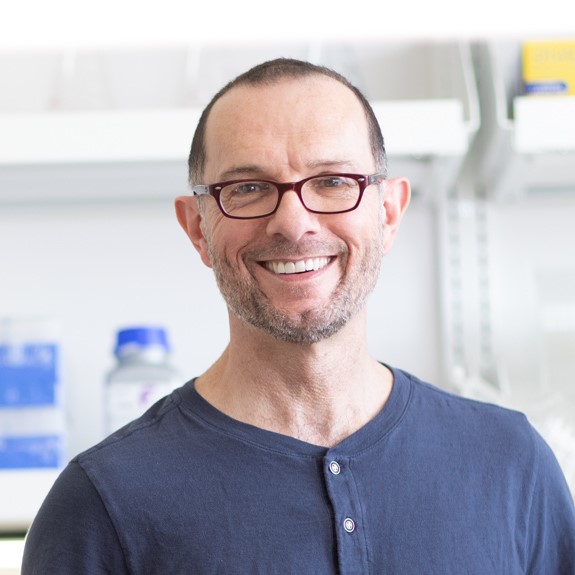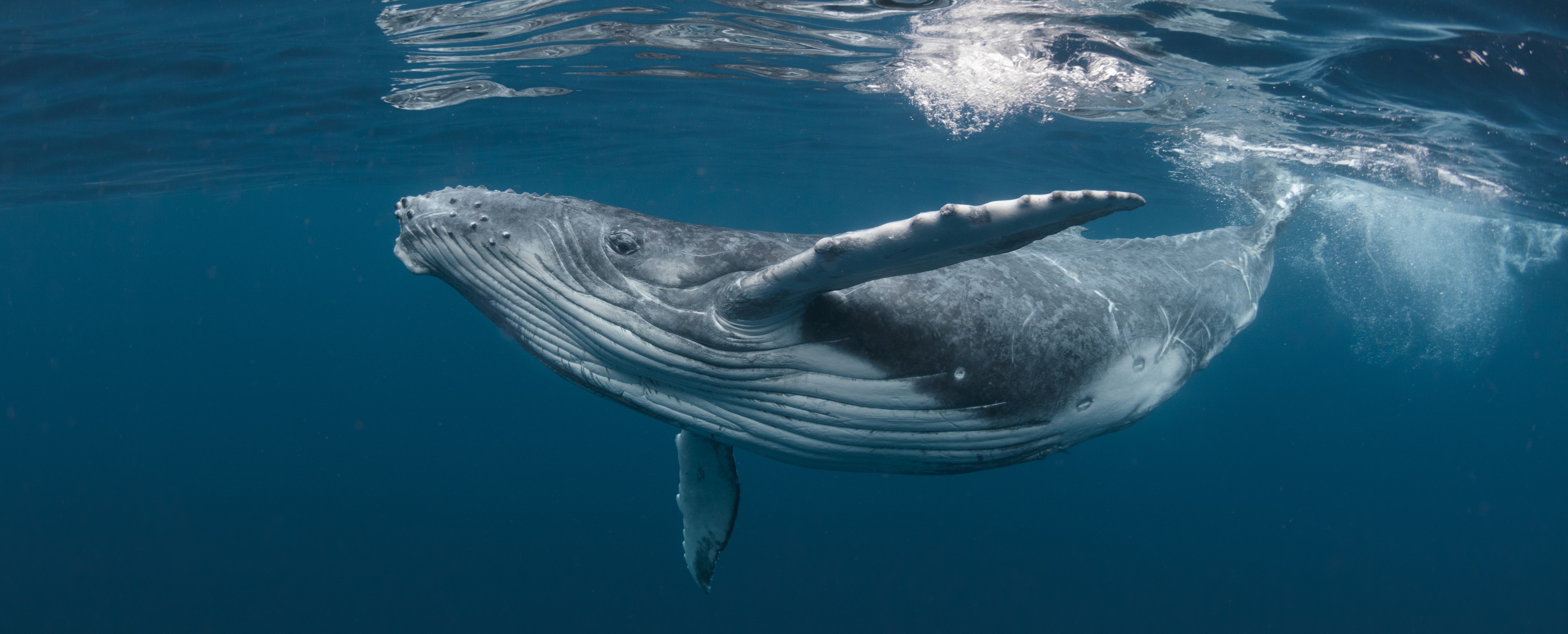by Buck Institute
September 11, 2024 . BLOG
Having a Whale of a Time Exploring How the World’s Largest Mammals Operate
One Buck researcher has found a way to study the mechanisms of whale muscles

Dr. Simon Melov
Whales are magnificent animals, “almost creatures of science fiction,” says Simon Melov, PhD. With hearts the size of small cars, muscles stretching for meters, and “crazy-long” lifespans, some whales live at least 200 if not 300 years. “That’s pretty amazing for a mammal,” he says. “We don’t know any terrestrial mammals that have anywhere near that lifespan, so how does that work? What is the mechanism? What is the biology?”
When Melov found out that a deceased blue whale had washed up on a nearby California beach, he wanted to collect some of its tissue to analyze. “I thought it was a good way to satisfy both my underwater interests and my longevity interests,” says Melov, a SCUBA diver and a professor studying aging at the Buck Institute. He arrived fully prepared with a necroscopy suit pieced together from Home Depot and entered the cavernous decomposing carcass.
 As he was sawing away to obtain a piece of the spine, he was busted almost immediately. As park rangers explained, whales are a protected species, even after they die. They insisted he turn over the material he had collected.
As he was sawing away to obtain a piece of the spine, he was busted almost immediately. As park rangers explained, whales are a protected species, even after they die. They insisted he turn over the material he had collected.
That encounter on the beach ended up being a turning point in Melov’s research focus. The same officials who stopped him from taking samples helped him to get the proper license to do research on samples from deceased whales. They even let him keep the bone fragments that he had collected, a piece of which resides on his office bookshelf.
Melov began to wonder if he could do something beyond just examining whale anatomy or dead tissue. “Biologically speaking, we have very little understanding of these animals' physiology,” he says. “As a far-reaching idea I thought about doing cell culture, but how would I obtain living whale cells?” Naturally, he found a whale guy.
Through the Pacific Whale Foundation, which regularly surveys whale populations, Melov connected with a researcher who takes biopsies of whale tissues to study them. Luckily, the organization honors requests for samples for molecular and cell biology studies, and Melov went through the steps with the Buck’s institutional review board to get approval for working on whale tissue.
Around that same time, researchers in Melov’s lab had begun to build artificial muscles from human biopsy samples. The researchers extract cells from the biopsied tissue, expand them and use a support to construct a living piece of muscle that twitches on contraction when stimulated. These engineered muscle tissue units (EMTs) can model muscle function and measure the forces it produces to see how muscle function is affected by various interventions. “As opposed to just looking at cells in a dish, EMTs are actual models of a tissue,” explains Melov.
“We have been doing this pretty routinely now for human muscle tissue,” he says. “Now we want to see whether whale muscle will be better or worse, or just see what is different.”
Melov’s team now has tissue from 10 whales, mostly humpback whales and some blue whales. They have cultured cells and frozen them. They are working on the next stage, which involves many steps, to characterize the cells and establish the right growing conditions to prepare for putting them into EMTs.
Using EMTs, the team can model various situations, observing whether or not a contractile force is generated under stimulation under various manipulations. For example, they can stress the tissue with various chemical or environmental insults, which they know would make a human EMT generate less force. In this way, they can observe how the whale tissue responds, and potentially find out which proteins the whale is producing to deal with insults.
Maybe discoveries from whale muscle cells will be useful someday to help human muscle function and aging. That would be great, but it is not even the point for Melov.
“We can do some pretty cool stuff with EMTs, so that is the end goal, just to study the fundamental biology of whale muscles,” says Melov. “We have no idea where this will go, or even if it will work really, but it’s an amazing thing to even be able to try.”

SHARE